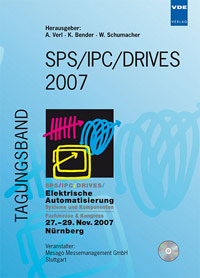The Impact of Ethernet on Industrial Communications
Konferenz: SPS/IPC/DRIVES 2007 - SPS/IPC/DRIVES/Elektrische Automatisierung - Systeme und Komponenten - Fachmesse & Kongress
27.11.2007 - 29.11.2007 in Nürnberg, Germany
Tagungsband: SPS/IPC/DRIVES 2007
Seiten: 4Sprache: EnglischTyp: PDF
Persönliche VDE-Mitglieder erhalten auf diesen Artikel 10% Rabatt
Autoren:
Morse, John (IMS Research, Automation & Control Group, Wellingborough, UK)
Inhalt:
For those that may not be familiar with industrial Ethernet the following may be of interest: Ethernet has been used in industry since it was first developed by Xerox in the 1970’s. However, for many it had limitations particularly regarding the nondeterministic nature of Ethernet TCP/IP; consequently the vast majority of applications were found in the commercial environment and that are still the case today. Industrial networking saw rapid development during the 80’s and 90’s with plethora of fieldbus technologies being introduced. There became so many technologies to choose from that systems designers longed for one technology that would meet all their networking needs and Ethernet looked like a good vehicle for doing this. It was fast, not aligned to any one industrial manufacturer and there was a lot of hardware readily available. It is μ view that these were the main reasons that, during the 90’s versions of Ethernet that overcame the determinism problems. In most cases this involved replacing or modifying the “TCP/IP” part of Ethernet TCP/IP with technology specifically designed to meet industry’s requirements. In some cases these requirements are very specific. Although all the common variants of Ethernet are open and administered by independent associations, most are supported and associated by one manufacturer. This has resulted in a number of “variants” of industrial Ethernet being available to users. They all carry data over an Ethernet network but a message generated at one node will not be understood at another node unless they are both using the same industrial networking technology.


